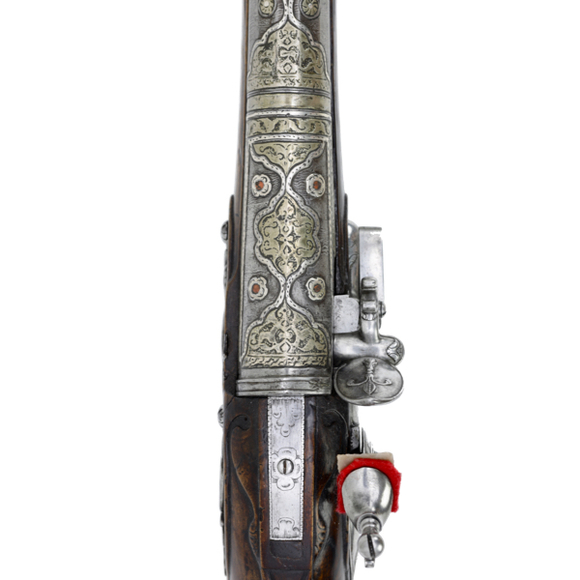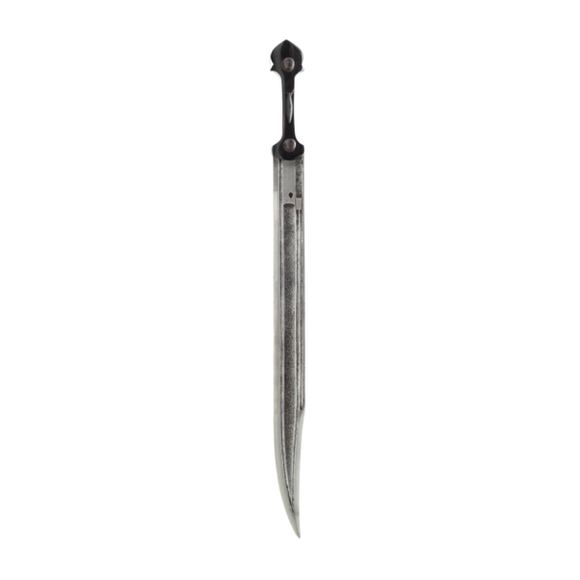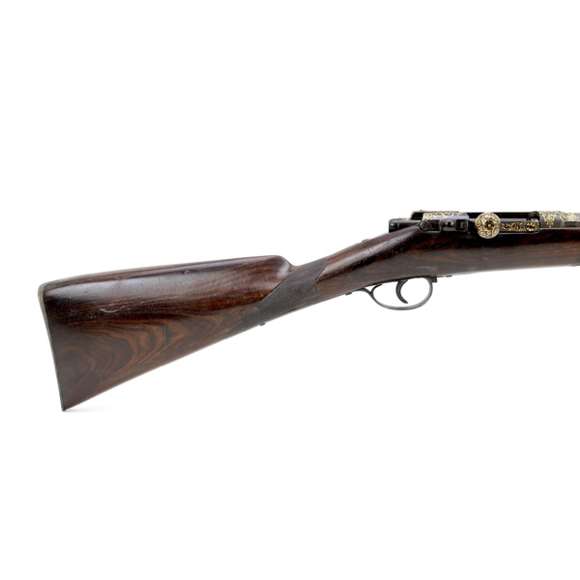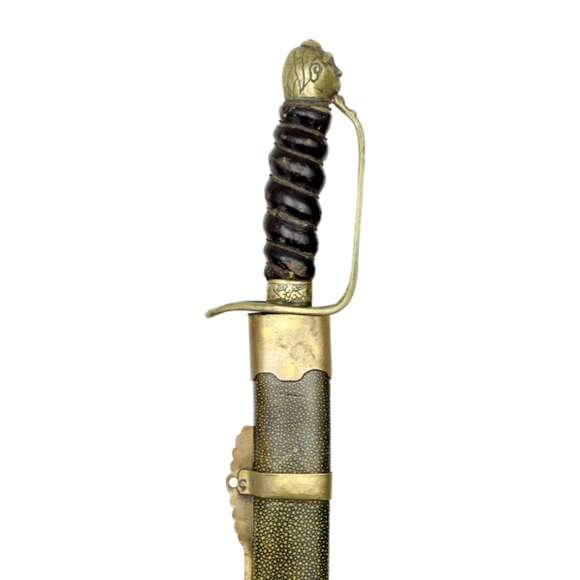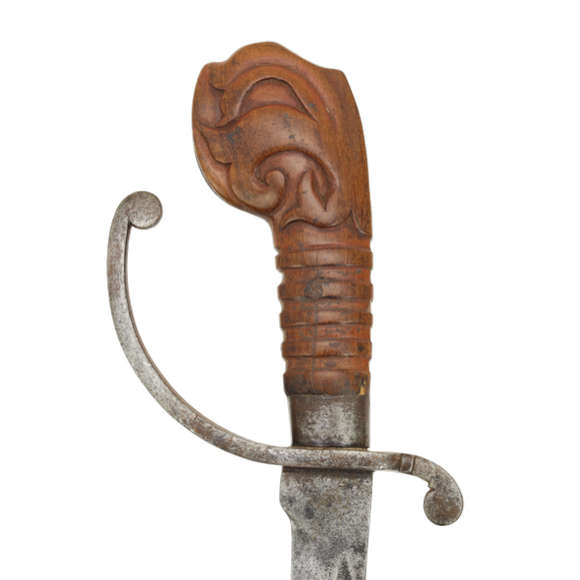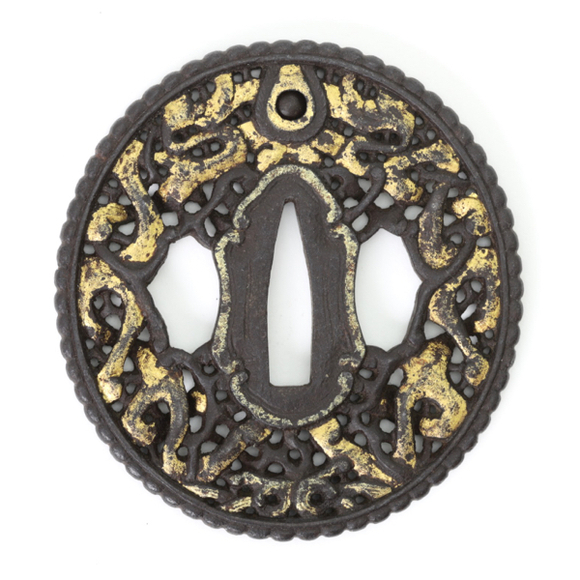Fine German hunting flintlock with captured Ottoman barrel.

34.9 cm
32.3 cm
22.2 cm
forte 7 mm
22 mm
161 grams
Probably Italy, for the Ottoman market.
Steel, gold, wood, velvet, ivory, white metal (silver?)
18th or 19th century
A fine and unusual dagger Ottoman court dagger of a type called hancer (خنجر) or hançar ( خنچار ) in Ottoman Turkish. This particular style, with somewhat hourglass-shaped handle and the narrow, double-edged blade is often called "Ottoman court dagger" in English because most are well-made and associated with the Ottoman elite.
Renaissance style mounts
The most striking feature about this piece are the heavy white metal scabbard mounts, elaborately decorated with griffins and scrolling vines with rosettes and acanthus leaves. The designs are very finely detailed and stand out in relief. The mounts are fire-gilt, with some wear on the high spots due to age. Despite the wear, the designs retained all their fine detailing.
Although the pieces below are probably centuries apart, there is quite a resemblance to the design of a Milanese breastplate of the 16th century, made by Giovan Paolo Negroli between 1540–45. It is held in the Metropolitan Museum, acquired in 1855:

The dagger compared with a 16th century Milanese breastplate in the Metropolitan Museum. Accession number: 14.25.1855
Hilt, blade and scabbard
The dagger has a nice sleek ivory hilt, with a sharply pointed dagger blade, both in a pure Ottoman style. The base of the blade is chiseled with acanthus leaves and two rosettes on either side with remains of gilding. The blade itself has a sunken panel and raised center rib. The steel seems to be a very fine type of crucible steel, like wootz, but with its pattern hardly visible. Several Ottoman court daggers have turned up with very similar steel blades. The scabbard body is covered with deep red silk velvet, showing mostly the warp as much of the pile is now worn.
Condition
Overall in good condition. Some minor wear on the decor on the forte of the blade, some losses of gold, and some chips off the ivory handle. See pictures.
Attribution
With the information currently available to me I find it hard to draw any sound conclusions on the place of manufacture, but from the above comparison, we can at least be sure that whoever made it was very well acquainted with Italian Renaissance work. We do know that in the 19th century, Europeans made work for the high-end Ottoman market, most notably Manceaux of Paris. I have one of these for sale at the moment as well. Such European made pieces tend to be signed and stamped with maker’s marks and silver/gold proof marks. This piece comes with no markings whatsoever, save for a number under the fabric washer that protects the ivory handle from the mouthpiece: 1732. A date?
 Number "1732" revealed under fabric on handle
Number "1732" revealed under fabric on handle
A theory
I personally am inclined to think the piece is probably a little bit later, late 18th to early 19th century, but the use of European style script does suggest manufacture in Europe, and given the style, this was most likely Italy.
Conclusion
A very unusual Ottoman court style dagger, possibly made outside of the Ottoman empire but clearly for the Ottoman market. The mounts are unusually fine, with renaissance revival designs and as such is the only dagger of its type I've ever seen. It is quite possibly unique. A product of cross-cultural influences, representing the refined and cultivated tastes of those wealthy enough to afford such sumptuous pieces.

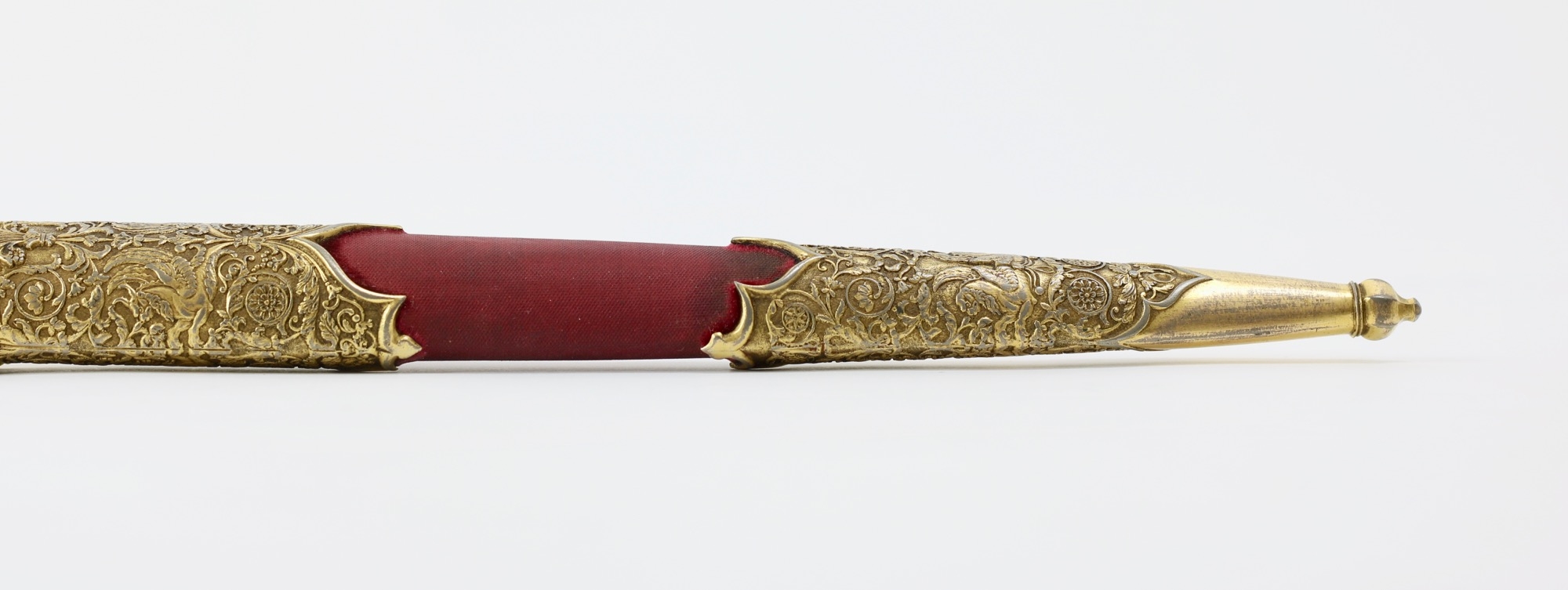


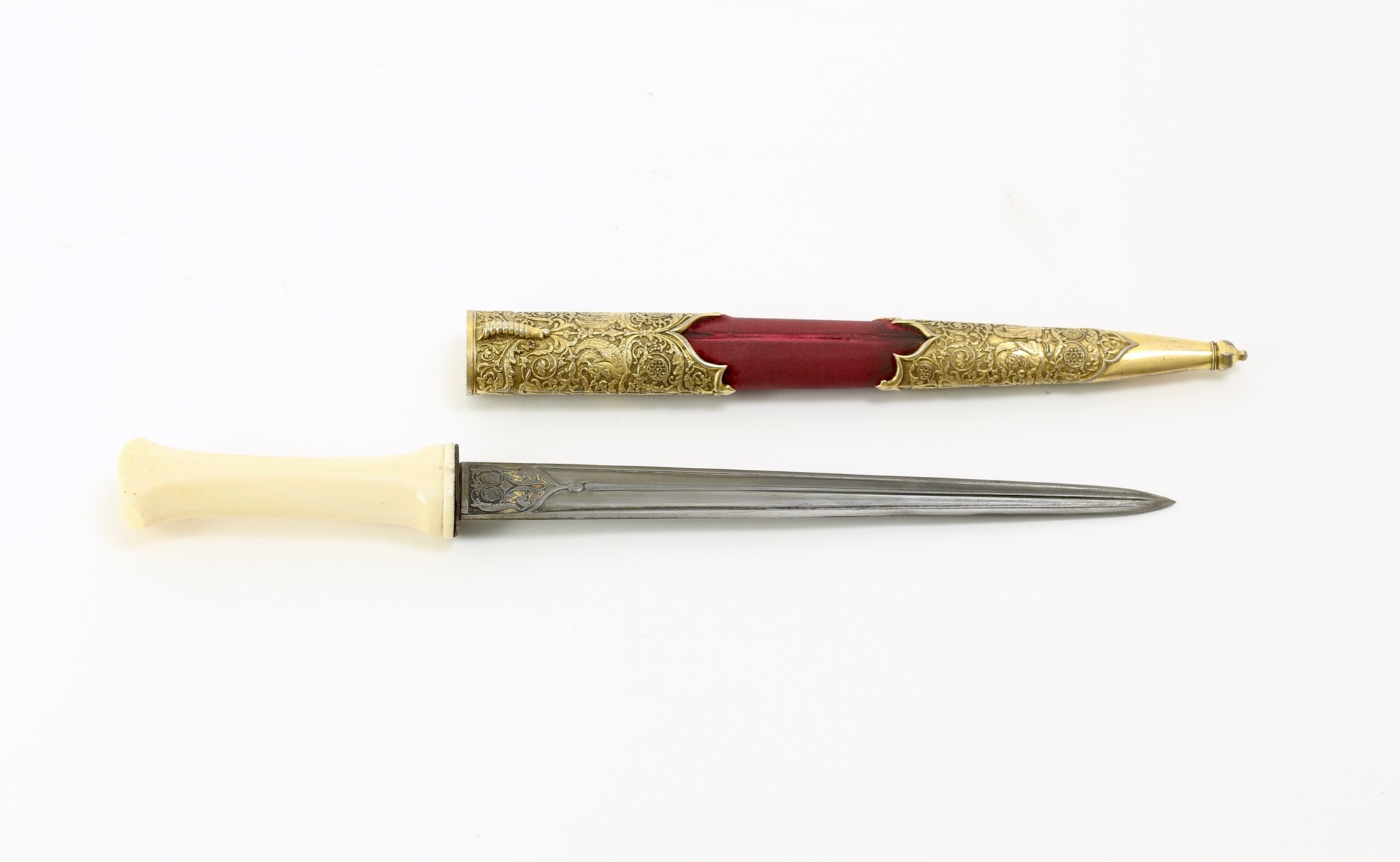


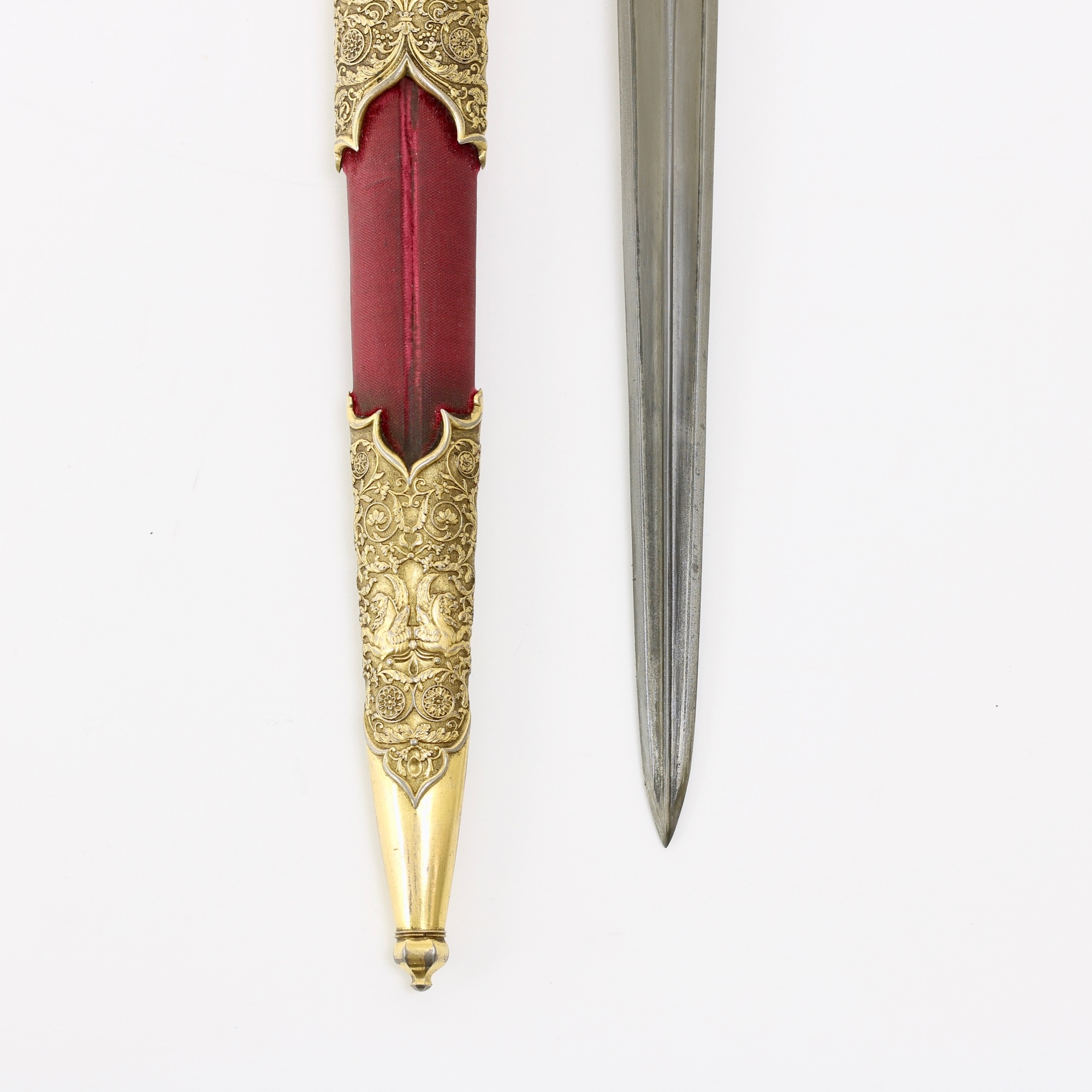









Based on the Dutch Beaumont mechanism, but with Indonesian twist forged barrel and golden inlays.

